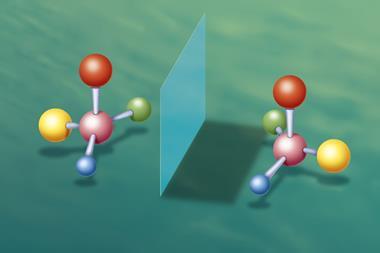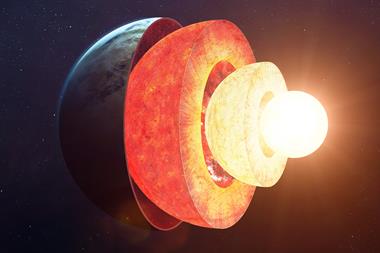Colorimetric method lends a hand to chiral amino acid recognition
Scientists in China have developed a colour-changing tool to spot right-handed amino acids.

Most amino acids exist in two forms that are chemically identical but are mirror images of each other, like left and right hands. Left-handed amino acids play a key role in biological processes and are vital to life. It therefore makes sense to want to differentiate between left and right-handed versions.
To date, no single approach can discriminate between these mirror-image pairs, termed enantiomers, for all chiral amino acids. Traditional separation methods, such as liquid and gas chromatography, are costly, have complicated sample pre-treatment steps and are incompatible with high-throughput analysis. UV and fluorescence spectroscopy relies on complexation with chiral receptors and many detect chiral amino acid derivatives. Advances in nanotechnology have led to simple and inexpensive nanoparticle-based colorimetric assays, but these are limited to a handful of amino acids.
Put your hands together then for Baoxin Li and colleagues at Shaanxi Normal University, who have taken nanoparticle chiral recognition one step further and developed a colorimetric assay that detects right-handed enantiomers of chiral amino acids, and quantifies them too. The assay stems from the discovery that right-handed amino acids induce a red-to-blue colour change when they bind l-tartaric acid-capped gold nanoparticles. Left-handed amino acids do not initiate a colour change.
Right-handed amino acids are an ideal fit with l-tartaric acid – much like hands shaking – and this interaction causes the nanoparticles to aggregate, activating the colour change. The system works for all chiral amino acids, with the exception of cysteine, which binds the gold surface of the nanoparticle regardless of its enantiomeric form. The method quantifies the purity of a sample by measuring the intensity of the colour change.
‘This chiral assay is easily read out with the naked eye or using a cheap UV-vis spectrometer,’ explains Li. ‘In comparison with common methods for chiral recognition this technique is more attractive because of its low cost, ready availability and simple manipulation.’
Colorimetric assay expert, Juyoung Yoon, at Ewha Womens University in South Korea, applauds the method. ‘It is a challenging and important task to distinguish the enantiomers of amino acids. Since this approach does not need complicated synthesis of chiral receptors bearing chromophores the current work has a great potential for practical use.’
‘The drawbacks of the technique are its sensitivity and that detection is limited to right-handed amino acids, as the left-handed do not give a response,’ comments Susan Lunte, an expert in protein separation and analysis, at the University of Kansas, US. ‘But the approach is definitely innovative so it could be used for on-site analysis of these substances for a variety of clinical, biomedical or even extra-terrestrial applications. This method could also potentially be expanded to the detection of other chiral molecules of biological significance in the future.’
References
This article is free to access unti 01 March 2016
G Song et al, Analyst, 2016, DOI: 10.1039/c5an02434j












No comments yet